List of Authors
>>About this blog
Recent blog post
|
[CAM]
July 28, 2016 18:00
In my last blog, I wrote that I didn't know the description that Kafu went to Takebatei, and I was a little worried and read "Shokutei Nijo". Then, several places, the name "Takebatei" appears.
(September 15, 1935) "It's a dark day. The time is the day. Around 4:00 pm today) I went to the Nihonbashi Shirakiya Tower used book exhibition and went to Owaricho Takebatei. "
(December 15, 1935) "I went to cogure Ginza and went to Owaricho Takebatei and visited the Gochaya Beru (Cuber)".
(October 5, 1937) "It's cloudy and hot. I don't think it's the climate of October. I got up at noon and went to Ginza to Tosa Bridge. ・・ ・ ・ ・ I will go to Ginza again at night and eat at Takebatei."
In addition, it is a description of eating eel.
(December 28, 1917) "I invite a contributor to Yone-do master 'civilization' to eel shop Miyakawa in front of Fukagawa Hachiman. I'll be invited to give up for the disease."
(May 28, 1921) "Invited by Matsumuko and drink to Nakadori's eel shop Komatsu."
(June 1947, 8) "It's like a bran all day long. At the market in front of Ichikawa Station, eat 90 yen eel rice and go to the sea god. "
However, as a whole, there are very few descriptions. It seems that eel was not very good for the cargo wind.
(Early 8, 1940), "Eels who educate their children must first be aware of the subtleties of these human minds," said, "Eels are not exhausted (all things) It's a big fall. "
[Shiba Inu]
July 28, 2016 14:00
On Sunday, July 24th, we washed Nihonbashi Bridge!
If you look at this, I feel that it's finally a summer performance.
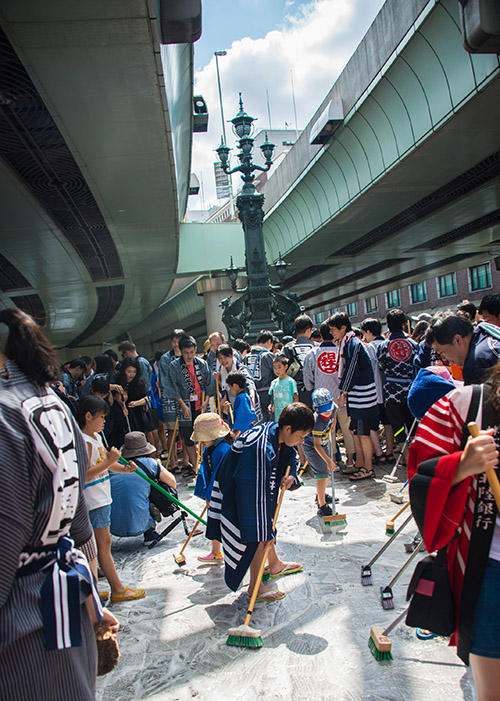
"Nihonbashi Washing" is hosted by [Naibashi Nihonbashi Preservation Society] and is held on the fourth Sunday of July every year. Neighborhood associations, fire departments, neighboring companies, etc. participate freely and clean Nihonbashi with a festive atmosphere. Participation is required by pre-registration. If you are interested, please contact us at Nihonbashi Preservation Society!
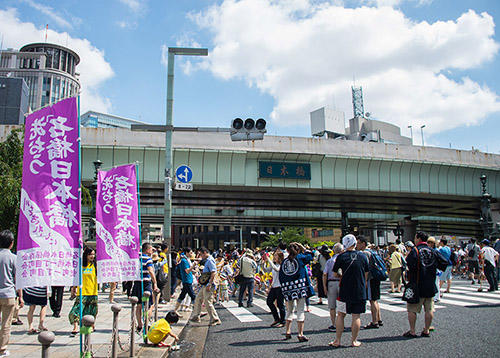
The day is from morning to summer. It's already full of people at nine a.m. Until noon, we will have you stop the nearby road and clean it together.
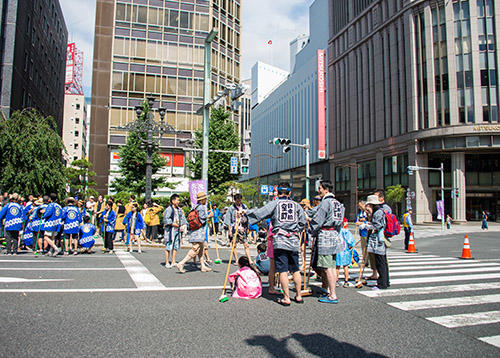
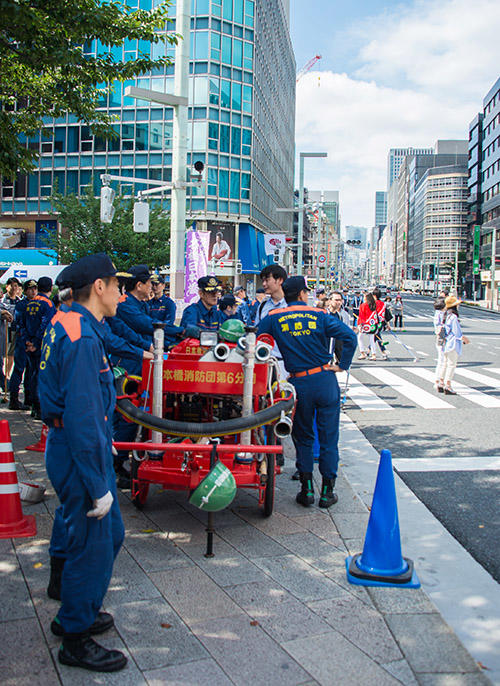
The fire department is also ready. It's cool! The children were flocking.
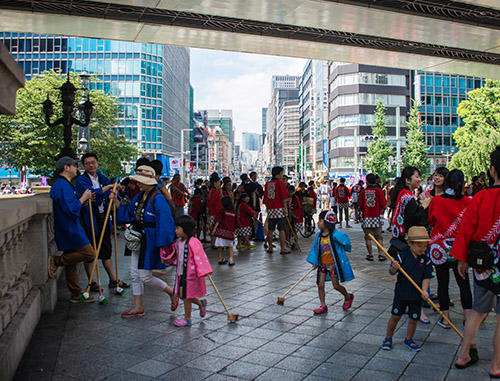
Well, first of all, from the ceremony.
"Japan Road Sign" in the middle of Nihonbashi Road, which you can't usually see (there is a reproduction in the square of Nihonbashi Kitazume!) And water from all over the world.
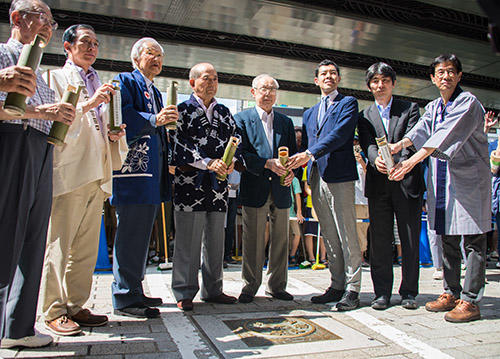 
It's cool. Yes! His figure, too...。↑
After the ceremony is completed successfully, a water truck will appear. This year, we are using reclaimed water. So the hydropower is weaker than usual.
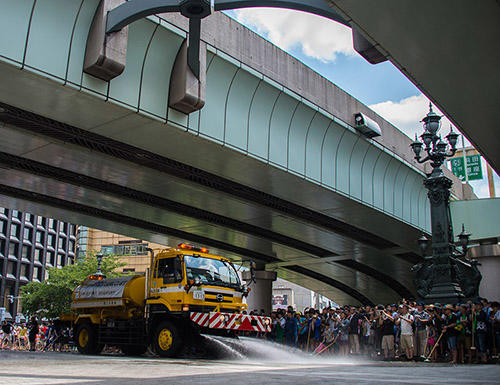
Well, I will do my best with human power!
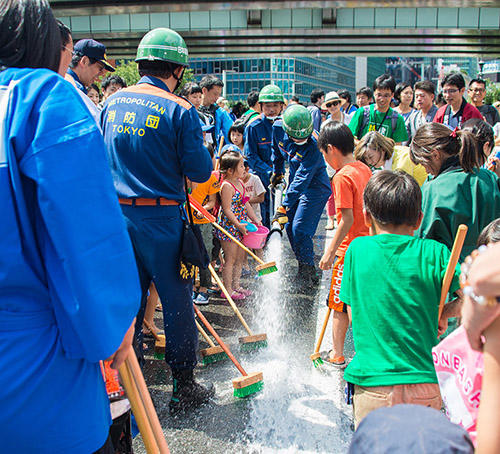
It looks like playing in the water. If the Nihonbashi River becomes a beautiful waterside, will these sights be seen on a daily basis?
And what's Starbucks across the bridge!
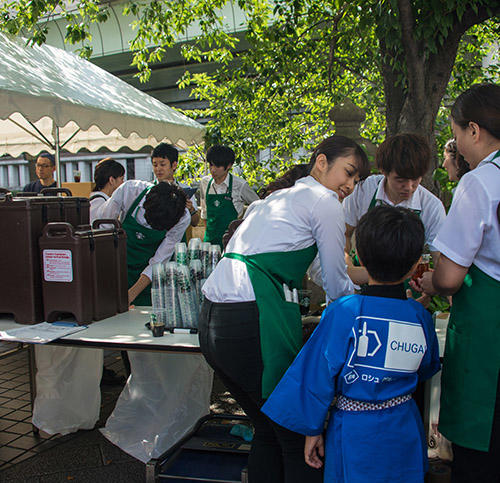
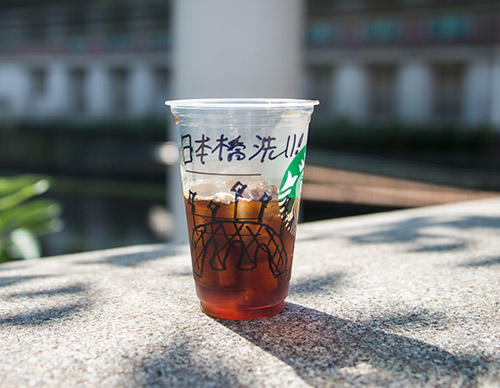
I've served iced coffee.
A lot of milk and sugar are also available so that even those who are not good at coffee or children can drink it. He served with a smile in the scorching sun. Thank you very much.
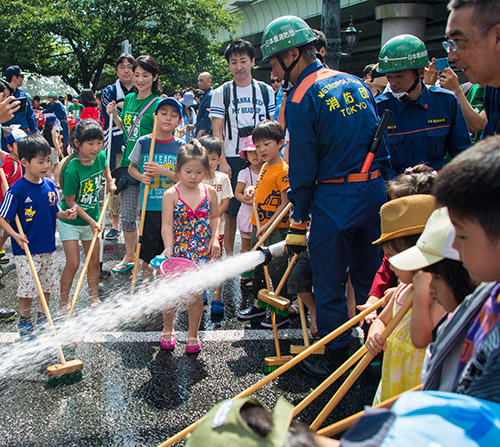
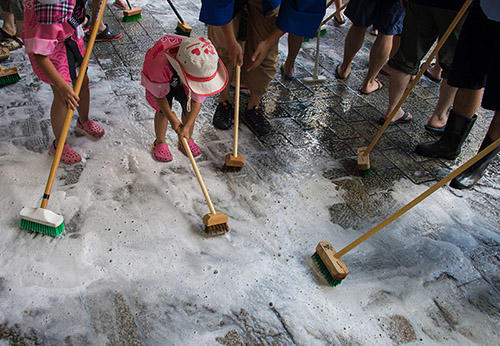
One hour has passed since the start. Nihonbashi is already Awaa. By this time, those who participated in plain clothes gently evacuated to the sidewalk. Rubber sandals and shorts are required if you want to wash them thoroughly!
Speaking of clothes, people from nearby companies participating in Nihonbashi Bridge Washing...My name is happi coat.
You can see happi coat, a variety of long-established companies that you can't usually see, as well as happi coat Mania. All of them are devised to express the corporate culture, and it's fun just to look at them.
 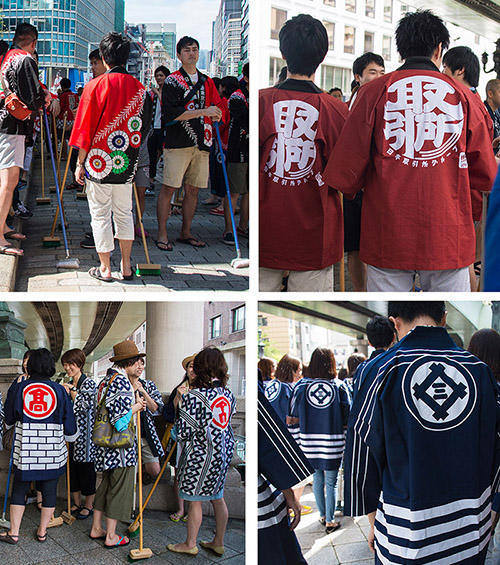 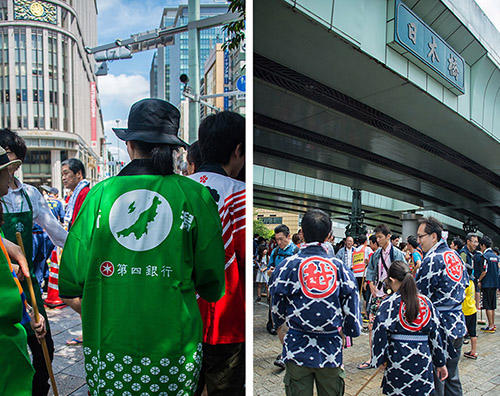
By the way, companies say that even if they participate today, they will not go to work on holidays (laughs).
As various people participate and clean and clean, even strangers can somehow get acquainted with each other. Please come and see such a bridge wash and everyone! Nihonbashi early in the morning is also interesting!
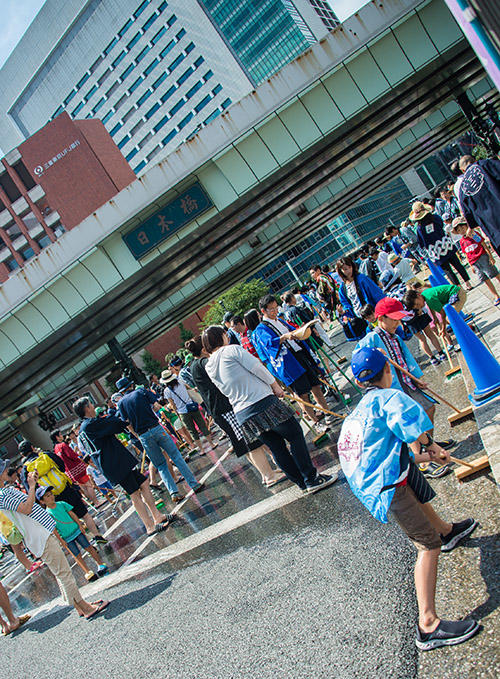 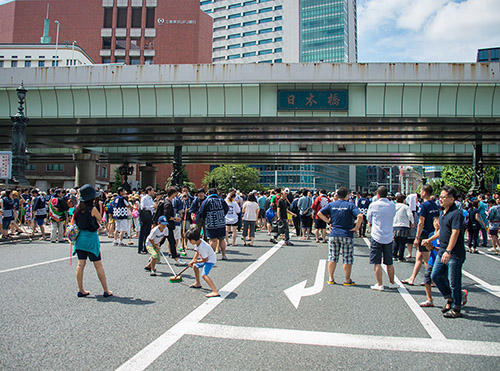
Finally, Chuo-ku is also in summer.
Everyone, please come and visit us!
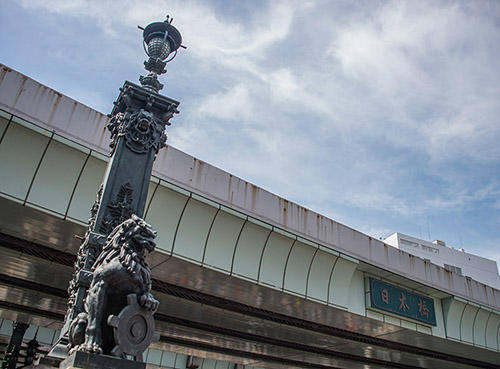
Is it beautiful?
[CAM]
July 27, 2016 18:00
Sagigoro introduced Yasaburo Ikeda's theory that the origin of the name "Nihonbashi" was derived from "Nihonbashi", but happened to understand this negatively ("Chuo Ward Ward Walking Historic Sites and History (Part 8) ", Chuo-ku Planning Department Public Relations Section, edited and published March 2010) (hereinafter referred to as "walks in the ward"). Yasaburo Ikeda's theory was preached in "Nihonbashi Private Note" (published in 1972), and it is a work nearly 45 years ago, but "walking in the ward" is relatively recent.
"Walking in the ward" is described as follows.
>Ikeda is said to have been a bridge "Nihonbashi" that originally passed two logs. The poor bridge is probably for construction, but from the width of the Nihonbashi River, it will not be used to pass two logs. (25)
But on the other hand,
>However, it is natural that a simple bridge was built for construction at the time of landfill. It may have been about to have passed two thick logs ... (19) and said that it was contradictory.
Mr. Ikeda
>"Seeing collection" (Keicho era hearing collection; early Edo period reading) that touched on the origin of Nihonbashi Bridge name. Miura Joshin's work. Published in 1614 (Keicho era 19). I think we should read the articles before and after the 10th volume.
And so on
>According to the "Mikishu", "Edo has only a narrow flow from the old days", and although I was "five bridges", "Minna, Tana Bridge, nameless bridges", The five bridges are (1) Kishibashi, (2) One bridge, (3) Takebashi, (4) Ohashi, (5) Zenbebashi, and (5) Zenbe.
And then
>I'm interested in the description of such a "watching collection" preaching how the name of the bridge will be spontaneously completed. Hitotsubashi because it is a one-bridge of Maruki, and Takebashi because it is made of bamboo. Ohashi because it's bigger than others. It's so natural and ordinary. (53)
Also,
>The book "One Purple (Hitomoto)" states, "What happened to Hitotsubashi, Nihonbashi (Nihonbashi) and there was no Sanbonbashi?" Nihonbashi was originally "Nihonbashi" in the background of what was written as "Gigo", but it is no confusing to see that the "knowledge" of the streets that people still knew was hidden that someday it became Nihonbashi due to the same sound association. (50).
And then
>The name of the bridge is simple and straightforward, not limited to the bridge, but it was originally simple from the origin of the place name, including the name of the bridge. (54) I think it is persuasive and agreeable.
In "Walking in the ward"
>Even if two were three and four, the name of the first "Nihonbashi" would have remained, but I think it would be impossible. (25)
It's strange to say something like that. If "Takebashi" changes to Dobashi instead of Kibashi, is it impossible for the name Takebashi to remain? Do you say that?
In addition to "Hitotsubashi" and "Takebashi" already mentioned, many place names such as "Roppongi" and "Nihonmatsu" have remained their original origins, and they are not necessarily "renamed" according to the current situation.
[CAM]
July 26, 2016 16:00
"Doyo Ox Day" is also close, and I want to continue talking about eel a little more.
When I happened to see a site called "8 eel shops I want to go to this summer", the name "Takebatei (Ginza)" is listed, and "If you say eel in Ginza, it is a famous restaurant that has the best name. The main store near Tsukiji has a quaint appearance and is also known as a shop loved by many literary writers such as Kafu Nagai. The Ginza store in front of Mitsukoshi can be eaten casually at a relatively affordable price for a prime location in Ginza."
http://news.infoseek.co.jp/article/zuuonline_112773/?p=2
However, I don't think Kafu frequently went to Takebatei. When I read the Shokutei Nijo, I immediately think of Ginza Shokudo in Ginza and Kinbei in Shimbashi as the names of the shops where the wind passed, but as far as I know, the name of Takebatei has not appeared.
Ginza Shokudo in Ginza and Shimbashi restaurant Kinbei is not a luxury restaurant, but in Nijo, "Go out to Ginza and eat at the Ginza Shokudo, Ginkanari, a clam soup taste Jinkanari" (January 10, 1929), "Ginza Shokudo in Ginza 1929", "Ginza 1929", "Ginza 9th", "Gin 9th", "Gin Ginza 9th", "Gin Ginza Shoku", "Gin 19th", "Gin Ginza Shoku", "Gin Ginza Shoku", "Ginzakeshi", "Gin Ginza Shokuin 9th", "Gin Ginza Shokuin Ginza Shokuin Ginza Shokuin Ginza Shokuin Ginza Shokuin Ginza Shokuin 1", "Gin Ginza Shokuin Ginza Shokuin Ainame's illuminated taste is good (April 14, 1935), "Eating evening meals at Shibakuchi Tsukuda Shigeru (Kinbei). It feels like "I'm really good for the earth" (July 31, 1937), and the food that is eaten by the wind is common people.
In the first place, Kafu had little obsession with food to gastronomy Junichirou Tanizaki.
Tanizaki also has an eel shop called "Oguro-ya" on Konnyaku Island in "Hosonoyuki".
>・ ・ ・ ・ ・ ・ ・ ・ I hung up saying that I would like my sister to have lunch here and have come early, but Etsuko decided to leave it in spring and thought about where to eat slowly after a long time, and I remembered that she liked eel. In the past, I often went to an eel shop called Oguro-ya, a place called Konnyaku Island with my father, so when I asked if there is still a house, I wonder, Komanzu I've heard that, but the landlady gave me a telephone book, but I'm sure I've got it in the Oguroya, so I'm leaving it in the room.
(The current Shinkawa area was called Reigishima (Rei Itsukushima) during the Edo period, and the contracted site for the Reigishi Bridge was reclaimed during the Kyoho period, and Tomijimamachi 1-2-chome was 1845 (1845) It was established by land reclamation on the west side of the island, but the coastal area of Kamejima River was bad because the land was not well shoreclaimed.)
Kitaoji Rosanjin said that in 1935, Komantsu, Takebatei, and Oguro-ya were listed as leading eel shops.
[Asunaro]
July 26, 2016 09:00
In the Edo period, on the night of January and July 26 in old calendar.
The event that waits for the moon to come out is "26 nights waiting"
He said.
As a famous place to wait for the moon in Edo
The busiest was along the coast from Takanawa to Shinagawa.
There are stalls near the coast, and there are houseboats for viewing moons.
It seems to have been crowded with many people.
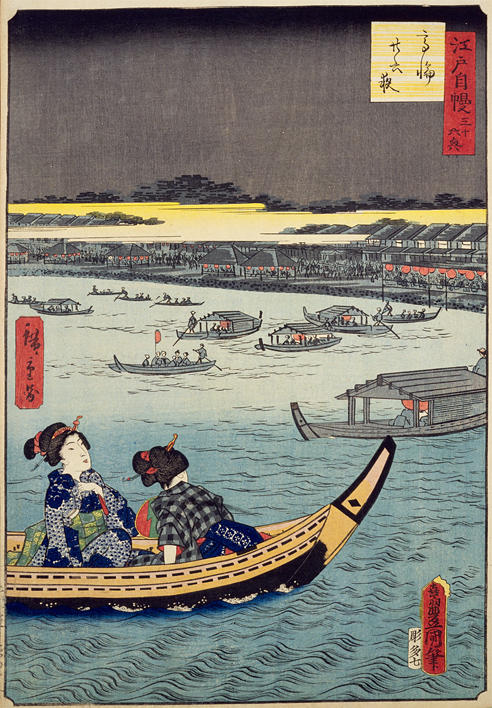 
<26 night wait> <Eitai Bridge Tsukuda Shima>
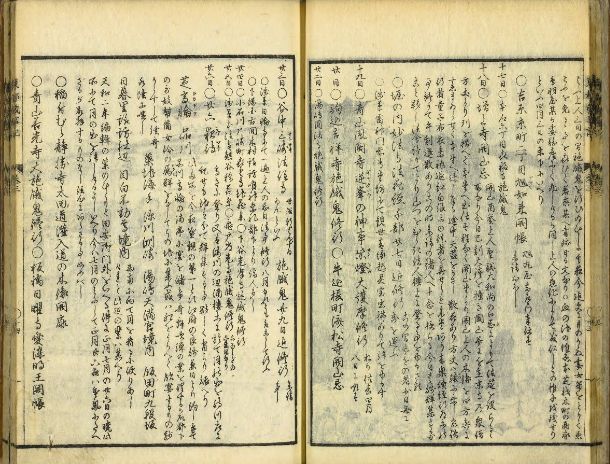
<Toto Toshijiki, Volume 4 Appendix, Volume 1>
In addition, Kudanzaka, Tsukiji Kaite,
Yushima Tenmangu Shrine, Fukagawa Suzaki, etc. were famous for viewing the moon.

<Ryogoku Bridge>
From now on, the season of fireworks festival.
There seems to be more opportunities to look up at the night sky.
I want to cool off well.
◆National Diet Library Digital Collection
http://dl.ndl.go.jp/
Those that have been published on the Internet (expired protection period) have been reprinted.
◆A famous place in Edo where you can enjoy Nishiki-e.
http://www.ndl.go.jp/landmarks/
[CAM]
July 23, 2016 09:00
We had you look at post "birth of" Unadon "" on July 8, 2016 and gave you the opportunity to talk a little on Chuo FM. .
In fact, in June this year, four classmates from college walked around Teganuma, Abiko City, Chiba Prefecture, visited the Yamashina Bird Research Institute, etc., and ate eel, which is a local specialty. At that time, since ancient times, the Shimousa region was said to produce high-quality eels, and it was said that the area near Ushikunuma was the birthplace of Unadon, but it was a little different from the explanation of Monoshiri Encyclopedia So, I was interested in investigating a little bit was the trigger of this post.
The Ibaraki Prefecture site "Unadon, a traditional Japanese taste born in Ibaraki", also explains almost the same as those in Ryugasaki City. Imasuke Okubo, the inventor of Unadon, is a real person from the Edo period. Born in 1757 in Hitachi-Ota City, Ibaraki Prefecture, in 1757, he went to Edo and demonstrated his business talent. He is a man who has built a fortune.
It is said that Imasuke Okubo was the gold owner (funder) of Nakamuraza in Sakaimachi, Edo Nihonbashi, and it is said that the first Unadon was sold in Onoya in Nihonbashi Fukiya town ("Monoshiri Encyclopedia"; page 156), but Chuo-ku was not the birthplace of Chuo-ku, even though it was not the birthplace.
This year seems to be July 30th, but why was it customary to eat eel on "Doyo Ox Day"? There are various theories about the origin, but the most famous thing is that in the Edo period, when we consulted Gennai Hiraga that eel shops were in trouble because eels could not be sold, a poster called "Today Ox Day" It seems that Gennai Hiraga devised "affixed to the store", and this worked, and the eel shop seemed to be thriving. Originally, the eel season is winter, so eels did not sell much in summer before. In order to promote unsellable eels, the theory is that the custom of eating eels was established during the non-seasonal "summer".
However, there is a theory that the inventor was not Gennai Hiraga (1728-79), but Nanpo Ota (Shusanjin) (1749-1823). It is said that the Doyo Ox Day appeared in the literature around the Bunsei period (1818-29), and in Monoshiri Encyclopedia, eelmeshi was sold from Onoya in Fukiya-cho during the cultural period (1804-1818) (pages 156). In terms of age, the theory of Nanpo Ota (Shusanjin) seems to be appropriate.
|
Links
|
























